Call them starfish, or seastars if you prefer (they’re not actually fish) but there’s no mistaking these celestially-shaped animals that dot the seabed around the world.
Most have five arms but some, like the enormous sunflower sea stars, have dozens. Starfish have amazing regenerative abilities. They can regrow lost arms and some species even sprout a whole new body from a severed limb.
Seastars are all types of echinoderms, together with brittlestars that have lots of snaky legs, spiny sea urchins and sausage-like sea cucumbers.
Joan Edwards, The Wildlife Trusts’ Head of Living Seas, says starfish are "Absolutely vital to their wider environment. They help maintain a delicate balance in coastal ecosystems through eating mussels and barnacles. Starfish may be weird but they are also wonderful!"
These stars of our rockpools and beaches offer a touch of magic to any trip to the coast. Find out more about where they live, what they eat, and species to spot with our guide to starfish in the UK.
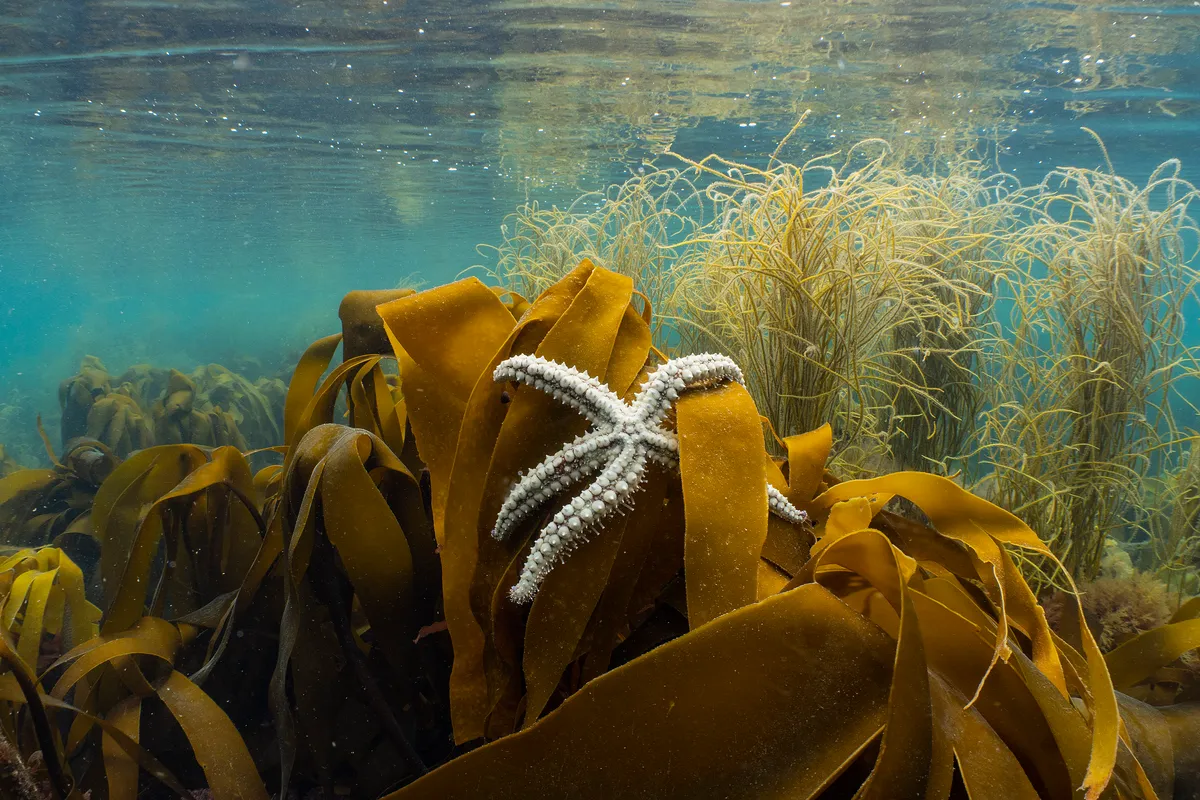
How many species of starfish are there in the UK?
More than 30 starfish species live in UK seas.
How many legs, or arms, do starfish have?
Starfish don't actually have legs, they have arms. Most starfish have five arms, but some have more, such as the seven armed starfish.
What do starfish eat?
Starfish are predators. Their diet consists of mollusks, such as mussels, clams and oysters.
Can starfish re-grow their arms?
Starfish can regenerate missing arms – in fact they can become whole again from just one arm and part of the central body.
Guide to starfish
Here some of the most-spotted UK starfish to look out for on trips to the seaside this summer.
Common starfish or sea star
Asterias rubens
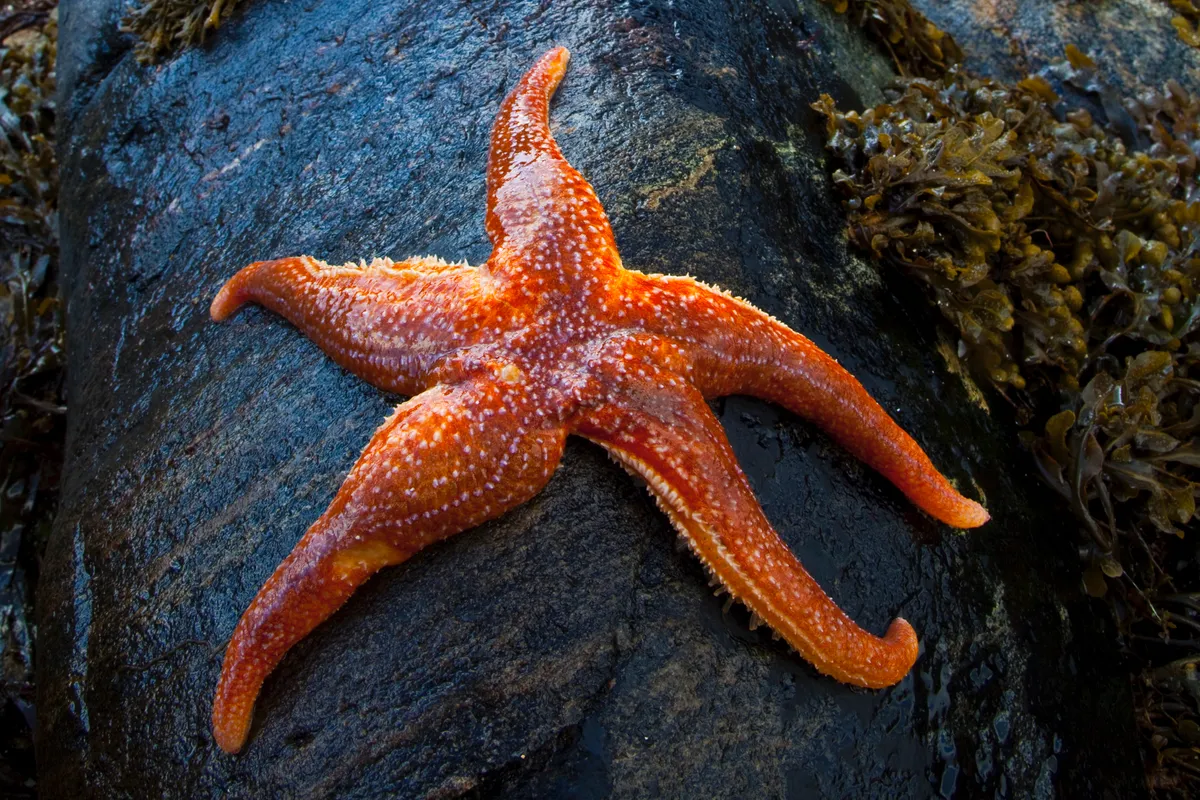
Although the common starfish is usually orange in colour, it can also be brownish or purple. It is instantly recognisable from its five-armed shape, with some individuals having six arms. Voracious predators that hunt for mussels and clams, they sometimes get washed up on beaches in huge numbers after storms. Average size is 20cm across.
Spiny starfish
Marthasterias glacialis
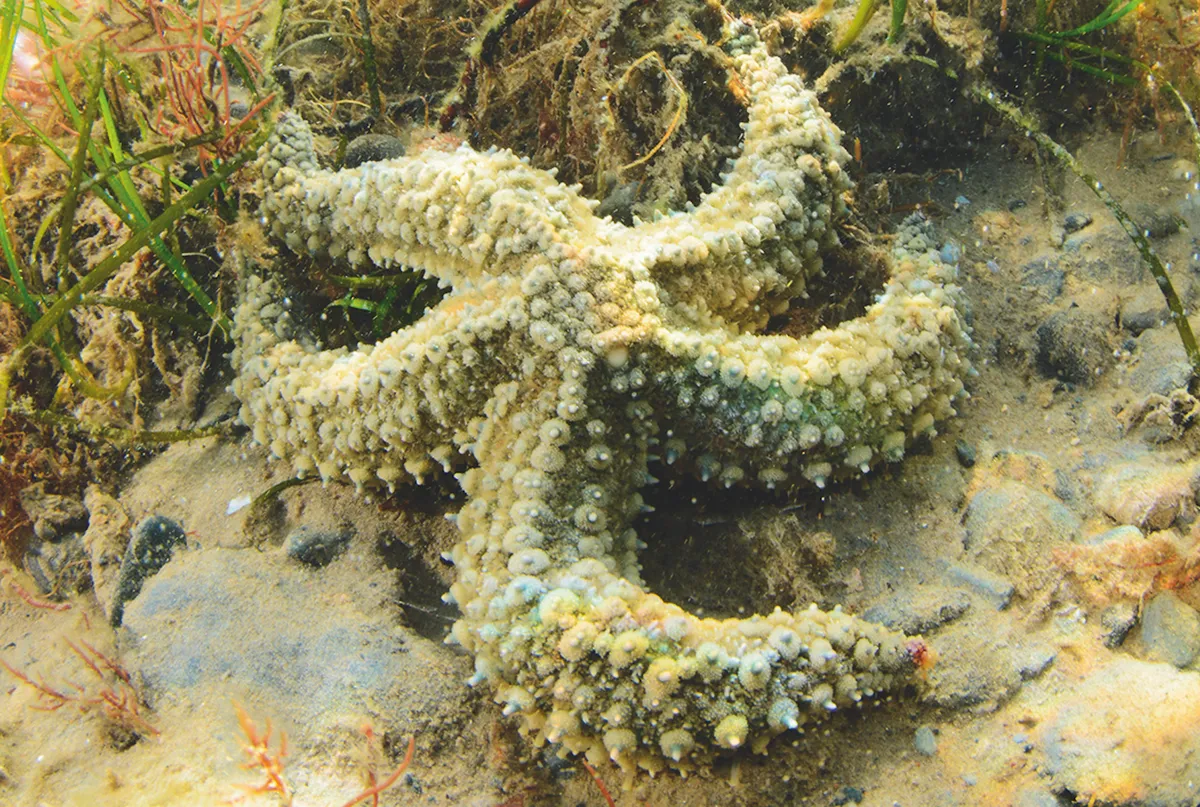
Spiny starfish are the biggest species in UK seas. Look out for them while you’re snorkelling. They are covered in three rows of spines on each of their five arms. Their whitish grey-green colour stands out even more because of the purple tip on each arm. Average size is 30cm across, but can be up to 70cm across – bigger than a car’s hubcap.
Cushion star
Asterina gibbosa
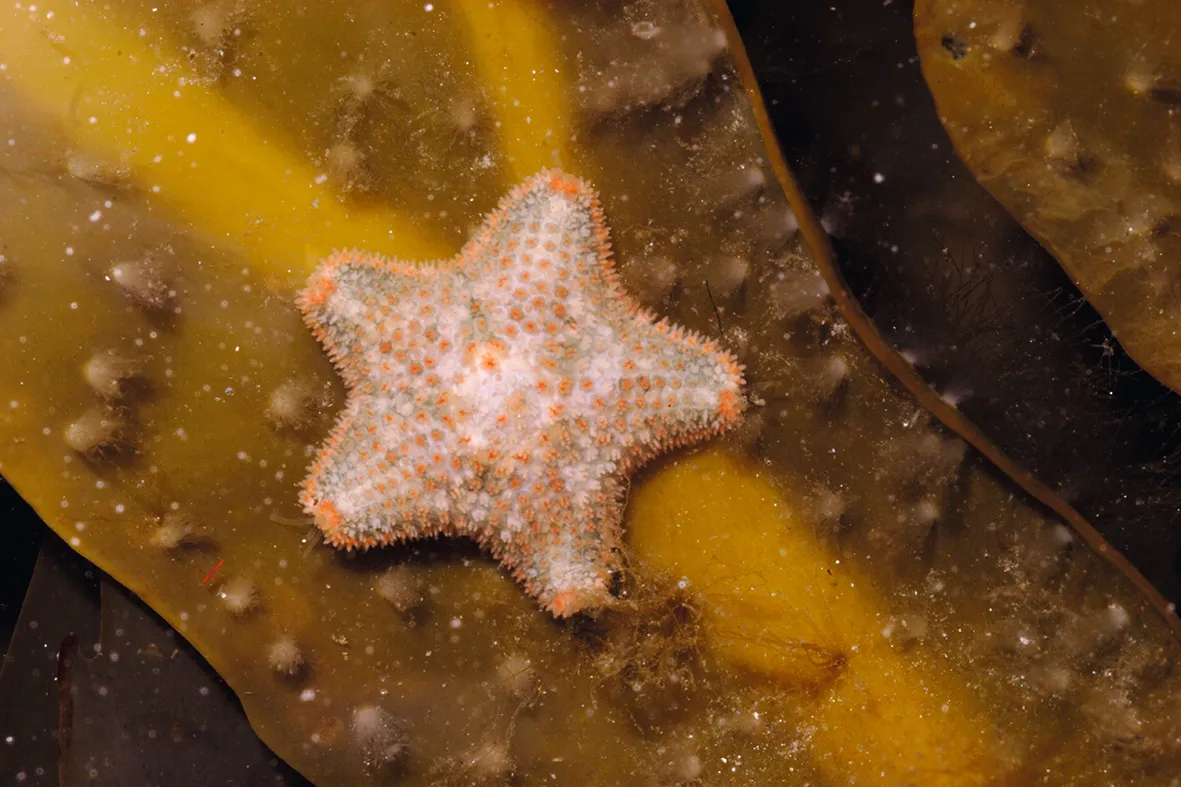
A rockpool regular, this cushion star is the smallest UK starfish. These adorable little starfish have short, stubby rays and puffy bodies. There are three different types of cushion star but this greenish-blue species is the one most likely to be found and is spottable in Devon. Look for them under rocks at low tide on the beach. The average size is 3cm across.
Bloody Henry starfish
Henricia oculata
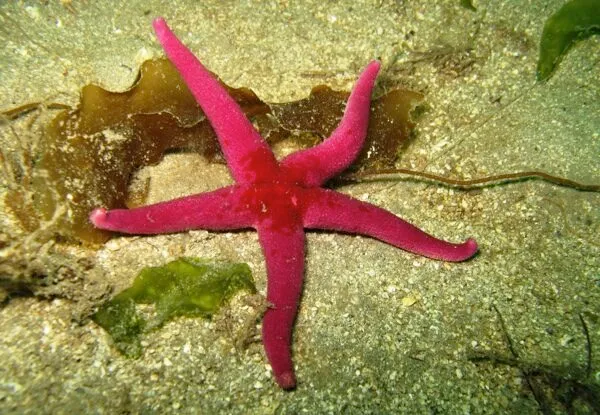
There are two species of this amazingly named, pinkish-red starfish (hard to tell apart). Their deep pinkish-red colour gives the Bloody Henry its name, though they can be purple. Seen on the very low shore, they live on waves-swept rocky areas of the coast. Average size is 15 cm across.
Sand star
Astropecten irregularis
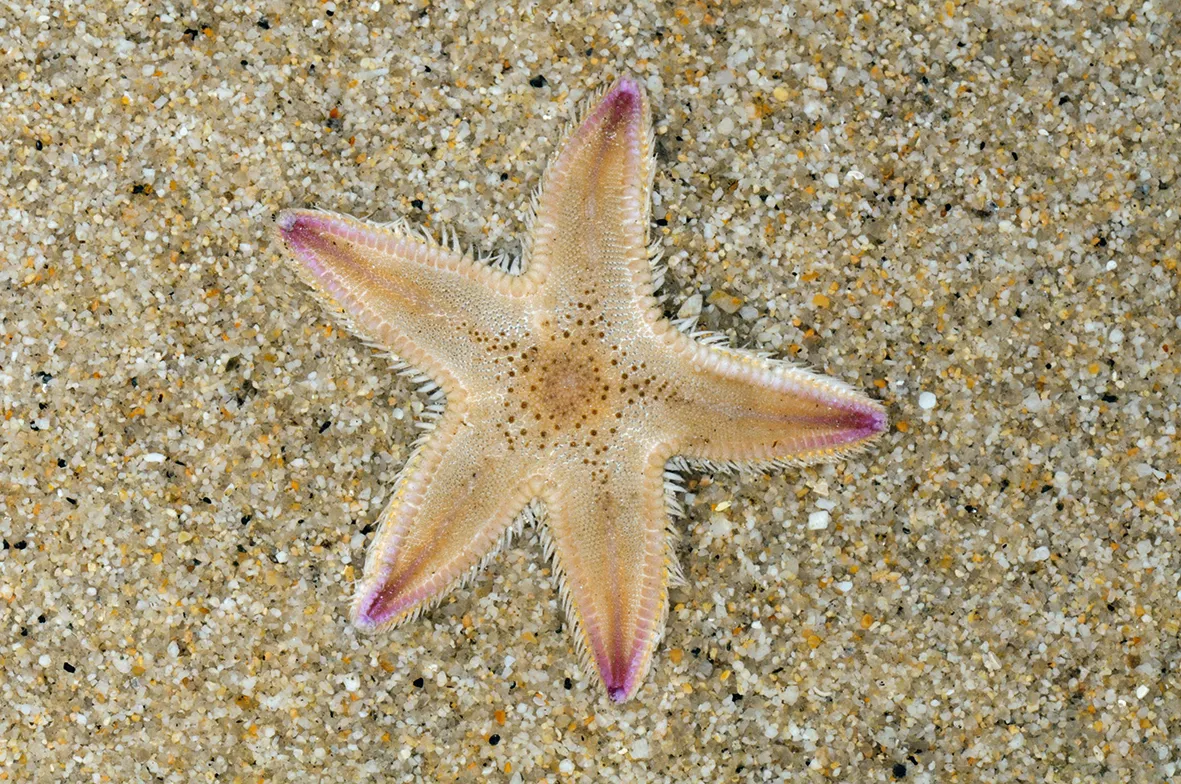
Sand stars lie flat and stiff on the seabed, as far down as 1,000m. They can be yellow, pink or brown, with purple-tipped arms. Up to 20cm across
Seven armed starfish
Luidia ciliari
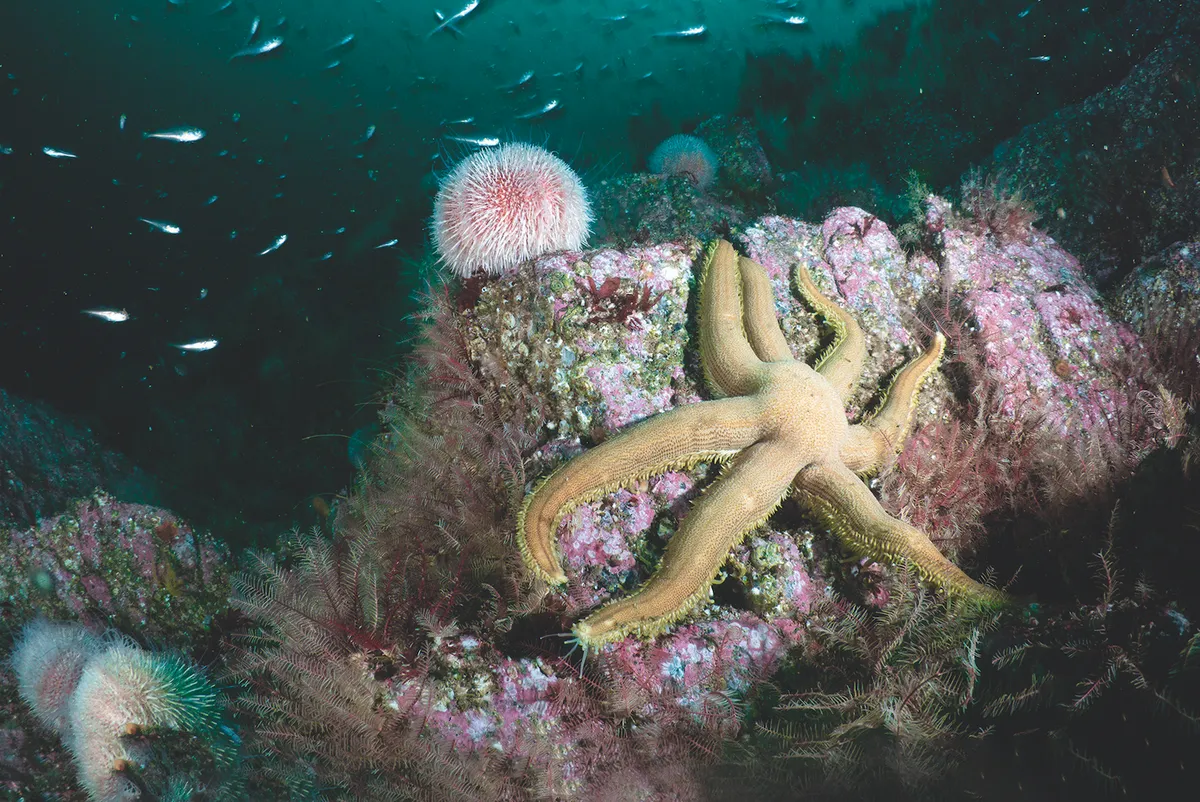
Bright orange, seven-armed starfish, that creep quickly across the seabed. Like all starfish, they move using thousands of tiny tube feet. Average size is 40–60cm across.
Brittle star
Ophiothrix fraglis
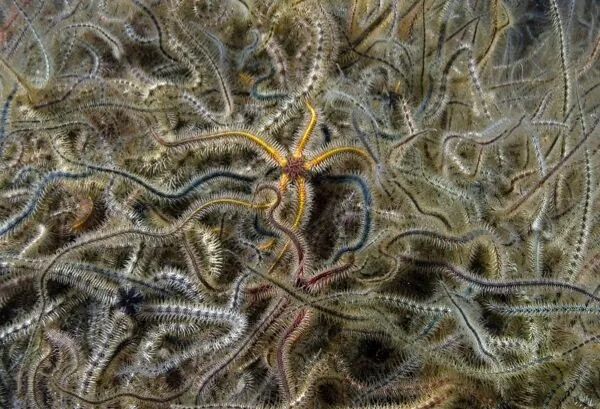
Brittle stars or ophiuroids are closely related to starfish. They crawl across the sea floor using their flexible arms for locomotion. They generally have five long, slender, whip-like arms which may reach up to 60cm in length.